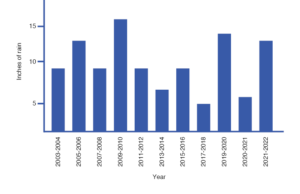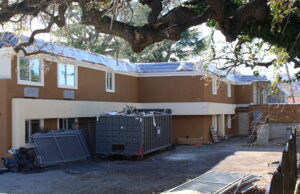Extreme weather is affecting lives
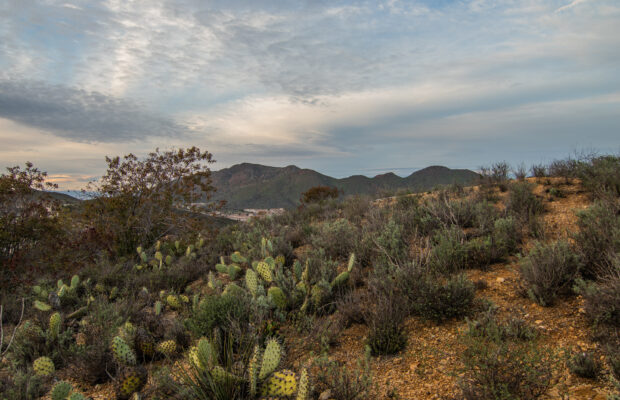
Many Newbury Park locals can agree that the winter this year has been colder, rainier and windier than most. With the severe cold and seemingly never-ending floods, our communities have been greatly affected.
The Effect
During extreme weather, the unhoused population is one of the most vulnerable groups in the community. Luckily, there are many local resources to assist people experiencing homelessness and make them feel comfortable and safe.
Yolanda Mosley, house manager at the Harbor House of Thousand Oaks, oversees people who are homeless and daily tasks such as laundry and meal serving. Mosley finds fewer homeless people, even on rainy or cold days. “When the weather is pretty bad, we see a lower number of clients because a lot of them don’t want to trek through the rain,” Mosley said. “We looked at our lunches, and when it was raining or super cold, there’s about 100 less lunches that were served compared to when the weather is better.”
In contrast to Mosley, Ken Craft, founder of Hope of the Valley Rescue Mission in San Fernando, finds that more homeless people are open to receiving help in poor weather. “More people are receptive to accepting the help that we offer. I think there just comes a breaking point when people are just really tired of being cold. And they started seeking other solutions other than, you know, living outside,” Craft said. Even after facing such a large demand of people, Craft strives to fit all that need housing. “Sometimes when people want to come inside, we just don’t have additional beds, but we’re constantly trying to increase our capacity to make sure we can help people in need because nobody should have to sleep outside in the elements,” Craft said.
To ensure that people who are homeless are dry during the harsher weather, Bob Engley, Thousand Oaks city council member, oversees the homelessness crisis and works to keep them safe. “We made sure that those folks [near canyons] knew that there was rain coming and that it was unsafe for them to be in the areas where they typically were, so they found alternate shelter for the times of the rain,” Engley said. “We’ve taken the funding from the state, and we’re doing the permanent supportive housing and the transitional housing.” To create more housing, Engley feels that the next upcoming housing plan for the city will be a stable option for the homeless. “The permanent supportive housing at the Quality Inn is going to be… 77 units of permanent housing. It would be just like an apartment, but it’s for those who have challenges in finding permanent housing.”
But unfortunately not everyone is able to get to safety, and between four and six people experiencing homelessness are found deceased in Los Angeles county every night under these extreme conditions showing there is still work that needs to be done.
After serving people who are homeless in the community, Mosley feels extremely grateful for her job. “When the clients come back, they’re just very thankful,” Mosley said. “Giving them [people who are unhoused] an extra blanket is going to help them sleep just a little bit better that night, which I think is like, the most rewarding thing over, like, all of it.”
The Science
Since Dec., the Western Coast has been experiencing weather significantly more severe than that of past years. Locals have experienced more frigid, cold weather and mass amounts of rain, specifically during the months of Dec. through Feb.
From late Dec. through mid-to-late Jan., a series of concentrated bodies of moisture traveled up from around Japan to the US, called atmospheric rivers. Atmospheric rivers influence jet streams which have a higher water vapor content— resulting in mass storms. As Eric Boldt, Warning Coordination Meteorologist for the National Weather Service Los Angeles, puts it, “[We just had] storm after storm rippling along from the Western Pacific over into the west coast,” Boltd said. The storms spend time picking up moisture over the ocean and winds from the south, that then blow the storms over mountain slopes. “That resulted in one of the wettest Januarys for many, many years across southern California, [resulting in] beneficial rainfall overall,” Boldt said.
Regarding these extreme changes in climate, Robert Martin, NPHS environmental science teacher, shared his thoughts on what these drastic cold spells could represent. “I believe that this storm system that’s happened right now has been a really strong example of not just that with oil pollution, but really with everything,” Martin said. “[We’re seeing] raw sewage washed into the ocean, certain places where wastewater treatment plants are being overwhelmed.”
Given the weather we have experienced over the past couple of weeks is abnormal for Southern California, the sudden burst of heavy rain has affected our community’s natural makeup. Dr. Sean Anderson, a professor at Cal State University Channel Islands, explains the global warming phenomena. “People talk about climate change and global warming, but I like the term ‘global weirding,’ because while a lot of places are getting warmer, what’s mostly happening is stuff is getting noisier. The weather is getting more chaotic. The wet times are getting wetter and the dry times are getting dryer,” Anderson said. The effect of this, according to Anderson, is that it is getting harder and harder to predict the weather, which often leaves us unprepared for storms and floods.
Anderson further explained that when drought first came to Southern California, people were unable to accept that they might have to use water sparingly. “You fly out from Burbank or LAX and when you look down, you see swimming pool after swimming pool,” Anderson said. People were so used to having steady rain that when it became rarer and more unpredictable, they were unable to adapt.
There may be a lot of negative effects of the rain, but Mark Mendelsohn, Santa Monica mountains biologist, has found that there are a few positives as well. “In general, I’d say they [the recent rain storms] are [beneficial] for the… native plants and wildlife in our region,” Mendelsohn said. The mass increase in water for the mountains has created a boom for wildlife and plants, influencing plant growth and the expansion of various species.
In response to questions of what the future holds, Martin explained that not only do students have the ability to change the course of our environment in the coming years, but also the common people as a whole. “It certainly is dependent on this current generation [and] the types of choices that we are going to make and are willing to make, both as consumers and as you know, just in our daily lives,” Martin said.
The Community
The abundant rain and harsh weather have negatively impacted local communities and natural areas. Robbie Denny, produce farm market manager at Underwood Farms, finds that his farm and many others operate based on the weather. “When we have a rainy season and it’s raining pretty bad, we have to unfortunately close the animal center,” Denny said. Denny explained that families are less likely to visit the farm in response to bad weather. “It’s too muddy because people can’t go out into the field to pick their own [fruits and vegetables], which is a big thing for us,” Denny said. “They [visitors] would just come and buy their vegetables or fruits…so there are no customers coming into the farm to visit the animals or pick your own.”
Thankfully, the overall community was prepared for the floods, and for the most part, was able to adapt. Al Adam, Mayor Pro Tempore of Thousand Oaks, offered some insight on how the situation was handled by the local authorities. “I am pleased to say that local damage was minimal and much less than most of Ventura County,” Adam said. “Being prepared individually and as a community is very important so when rain and wind is in the forecast, Public Works crews prepare by clearing storm drains, debris basins, and conducting targeted brush clearance where flooding may occur,” While Adam used his position to make sure that the community as a whole was well prepared, he also noted that individual citizens do not always take the steps necessary to stay safe. “One area of particular concern when it rains are streets that get flooded or cluttered with fallen debris. It is very important for drivers to slow down when it rains, to navigate flooded areas or debris in the street,” Adam said.
When it comes to extreme weather and most specifically rain, the people have to be prepared beforehand to minimize the effects. Eric Boldt, Warning Coordination Meteorologist for the National Weather Service Los Angeles, notes flood insurance is a good start. “Most people think if I live near a levee or a river that I might need this, but anybody could be flooded,” Boldt said. Unfortunately it’s a separate insurance than just regular home insurance, like earthquake insurance. Preparing flood kits, or making sure, in the event of an evacuation, all essentials or significant belongings are readily available to take in a hurry could be of a massive help for a minimal amount of preparation.
The financial impact is another impact that shouldn’t be overlooked. The cost of repairing the damage for such events could be heavy and quickly add up. “If we’re not prepared for more extreme weather events, then the cost to either property, things that we build, like our homes or whatever we buy can be damaged and we could see more property damage that drives up,” Boldt said.
When there is little to no rain, Robbie loves to overlook the beauty of the farm. “We’re the only place around here in Ventura County where the families come out, [and] visit the animals,” Robbie said. “It’s [the Farm] a safe place for the children to be because it’s fenced in, so they are able to visit the animals.”
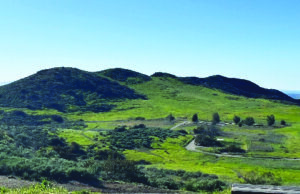
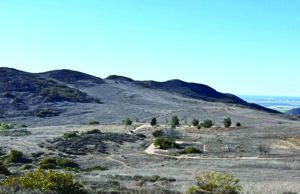
Transformation – The left image shows the Santa Monica Mountains in the Newbury Park area, in June of 2021. The image on the right shows the exact same location in early February of this year. In approximately a year and a half, the color changed so dramatically. Going from gross to green! The drastic increase of vegetation shows the effects of copious amounts of rain after a lengthy dry spell. Situations like this are becoming more common as weather patterns are becoming more unpredictable. Kira Ivarsdottir/Prowler
